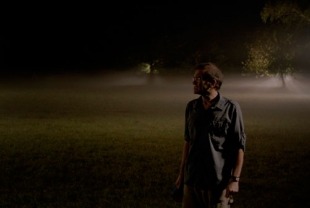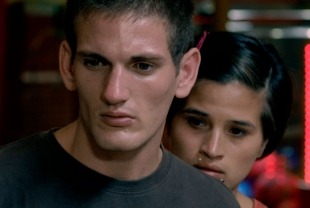In their gated communities north of Buenos Aires, upper-class Argentinians would seem to have more than they need for contentment. But many of them do not feel safe in their homes. They distrust and fear strangers who could take what they have or desecrate their palatial estates. In the opening scene of this unusual film a helicopter flies over an area of shanty towns and announces that the residents must evacuate and be relocated.
Below in a field, an older man is kicking a ball around with a child who suddenly becomes very angry and curses his elder. Camilo (Francisco Lumerman) is upset when the burglar alarm goes off at his uncle's mansion. A guard from the estate comes to investigate but finds nothing awry inside the house. In another scene, an unseen person throws mud at a vehicle with a policeman sitting inside.
There are people everywhere who are agents of chaos and dread. A naked man frightens and sickens a mother and her son, and a young man at a restaurant does some weird movements and then crouches down on the floor on all fours as if he were transformed into a dangerous animal. Elsewhere citizens are irritated by constant power shortages and elevators that don't work. In addition, some unknown persons are setting fires in dumps and parks.
Camilo interviews some people and learns about their wide-ranging and disconcerting fears. When he questions relatives about their hopes, they are vague and unemotional in their responses. Human beings are wired in the brain to accentuate the negative. Here fear trumps hope.
Benjamin Naishtat's History of Fear depicts the isolation that comes with a life of constant dread and paranoia. From start to finish, this Argentine film maps the dis-ease of those who allow themselves to be imprisoned by their own negative and self-destructive thoughts.
Screened at the New Directors/New Films Festival, 2014, Lincoln Center, New York.

